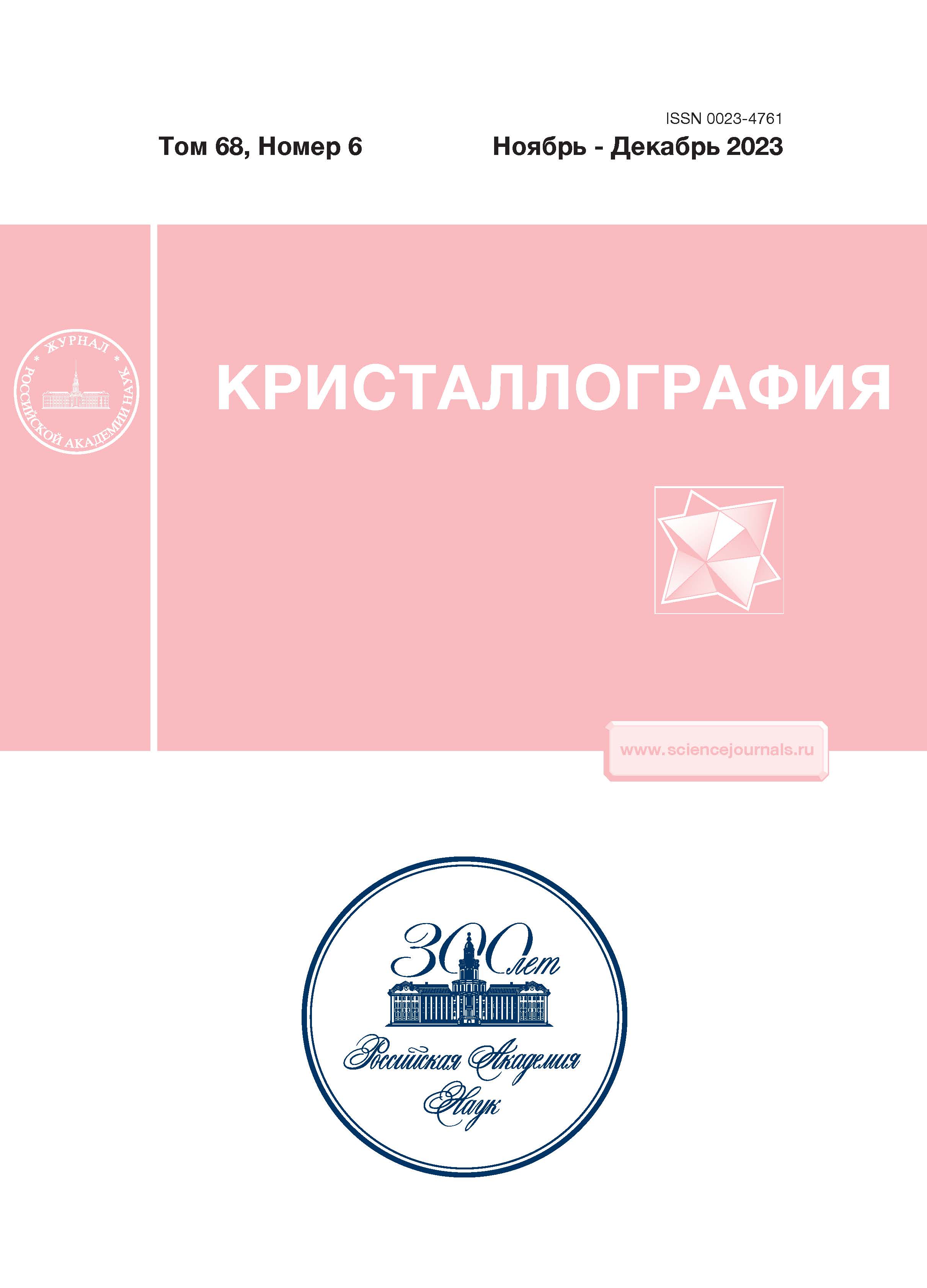Application of the Crystal Structure of the SARS-CoV-2 Spike Protein for the Development of a Peptide Vaccine against Virus
- Autores: Ivanovsky A.S.1, Kolesnikov I.A.2, Kordonskaya Y.V.2,1, Ermakov A.V.2, Marchenkova M.A.2,1, Timofeev V.I.2,1, Pisarevsky Y.V.1,2, Dyakova Y.A.2, Kovalchuk M.V.2,1
-
Afiliações:
- Shubnikov Institute of Crystallography, Federal Scientific Research Centre “Crystallography and Photonics,” Russian Academy of Sciences, 119333, Moscow, Russia
- National Research Centre “Kurchatov Institute”, 123182, Moscow, Russia
- Edição: Volume 68, Nº 6 (2023)
- Páginas: 955-958
- Seção: КРИСТАЛЛОГРАФИЯ В БИОЛОГИИ И МЕДИЦИНЕ
- URL: https://ter-arkhiv.ru/0023-4761/article/view/673310
- DOI: https://doi.org/10.31857/S0023476123600349
- EDN: https://elibrary.ru/ABZIFA
- ID: 673310
Citar
Texto integral
Resumo
Based on the spike protein of the SARS-CoV-2 virus, a protein capable of causing an immune answer has been predicted. The protein stability in solution is confirmed by the molecular dynamics simulation. Immunomodulation has shown that this protein causes an immune reaction and, correspondingly, may serve a vaccine prototype.
Sobre autores
A. Ivanovsky
Shubnikov Institute of Crystallography, Federal Scientific Research Centre “Crystallography and Photonics,” Russian Academy of Sciences, 119333, Moscow, Russia
Email: a.1wanowskiy@gmail.com
Россия, Москва
I. Kolesnikov
National Research Centre “Kurchatov Institute”, 123182, Moscow, Russia
Email: a.1wanowskiy@gmail.com
Россия, Москва
Yu. Kordonskaya
National Research Centre “Kurchatov Institute”, 123182, Moscow, Russia; Shubnikov Institute of Crystallography, Federal Scientific Research Centre “Crystallography and Photonics,” Russian Academy of Sciences, 119333, Moscow, Russia
Email: a.1wanowskiy@gmail.com
Россия, Москва; Россия, Москва
A. Ermakov
National Research Centre “Kurchatov Institute”, 123182, Moscow, Russia
Email: a.1wanowskiy@gmail.com
Россия, Москва
M. Marchenkova
National Research Centre “Kurchatov Institute”, 123182, Moscow, Russia; Shubnikov Institute of Crystallography, Federal Scientific Research Centre “Crystallography and Photonics,” Russian Academy of Sciences, 119333, Moscow, Russia
Email: a.1wanowskiy@gmail.com
Россия, Москва; Россия, Москва
V. Timofeev
National Research Centre “Kurchatov Institute”, 123182, Moscow, Russia; Shubnikov Institute of Crystallography, Federal Scientific Research Centre “Crystallography and Photonics,” Russian Academy of Sciences, 119333, Moscow, Russia
Email: a.1wanowskiy@gmail.com
Россия, Москва; Россия, Москва
Yu. Pisarevsky
Shubnikov Institute of Crystallography, Federal Scientific Research Centre “Crystallography and Photonics,” Russian Academy of Sciences, 119333, Moscow, Russia; National Research Centre “Kurchatov Institute”, 123182, Moscow, Russia
Email: a.1wanowskiy@gmail.com
Россия, Москва; Россия, Москва
Yu. Dyakova
National Research Centre “Kurchatov Institute”, 123182, Moscow, Russia
Email: a.1wanowskiy@gmail.com
Россия, Москва
M. Kovalchuk
National Research Centre “Kurchatov Institute”, 123182, Moscow, Russia; Shubnikov Institute of Crystallography, Federal Scientific Research Centre “Crystallography and Photonics,” Russian Academy of Sciences, 119333, Moscow, Russia
Autor responsável pela correspondência
Email: a.1wanowskiy@gmail.com
Россия, Москва; Россия, Москва
Bibliografia
- Chan J.F.-W., Yuan S., Kok K.-H. et al. // Lancet. 2020. V. 395. № 10223. P 514. https://doi.org/10.1016/S0140-6736(20)30154-9
- Zhu N., Zhang D., Wang W. et al. // N. Engl. J. Med. 2020. V. 382. P. 727. https://doi.org/10.1056/NEJMoa2001017
- WHO (2020) Coronavirus Disease (COVID-19) Dashboard. World Heal. Organ.
- Clinical management of severe acute respiratory infection when novel coronavirus (2019-nCoV) infection is suspected: interim guidance, WHO, 2020, 28 January.
- Randhawa G.S., Soltysiak M.P.M., El Roz H. et al. // PLoS ONE. 2020. V. 16 (1). E. 0232391. https://doi.org/10.1371/journal.pone.0232391
- Dongwan K., Lee J.-Y., Yang J.-S. et al. // Cell. 2020. V. 181. № 4. P. 914. https://doi.org/10.1016/j.cell.2020.04.011
- WHO Draft Landscape of COVID-19 Candidate Vaccines. WHO, Geneva-2020.
- Smith Trevor R.F., Patel A., Ramos S. et al. // Nat. Commun. 2020. V. 11. P. 2610. https://doi.org/10.1038/s41467-020-16505-0
- Mulligan Mark J., Lyke K.E., Kitchin N. et al. // Nature. 2020. V. 586. P. 589. https://doi.org/10.1038/s41586-020-2639-4
- Zhu F.-C., Guan X.-H., Li Y.-H. et al. // Lancet. 2020. V. 396. № 10249. P. 479. https://doi.org/10.1016/S0140-6736(20)31605-6
- Gao Q., Bao L., Mao H. et al. // Science. 2020. V. 369. № 6499. P. 77.
- Cao Y., Yisimayi A., Jian F. et al. // Nature. 2022. V. 608. P. 593. https://doi.org/10.1038/s41586-022-04980-y
- Gallagher T.M., Buchmeier M.J. // Virology. 2001. V. 279. № 2. P. 371. https://doi.org/10.1006/viro.2000.0757
- https://pymol.org/2/
- Abraham M.J., Murtola T., Schulz R. et al. // SoftwareX. 2015. V. 1. P. 19. https://doi.org/10.1016/j.softx.2015.06.001
- Lindorff-Larsen K., Piana S., Palmo K. et al. // Proteins. 2010. V. 78. P. 1950. https://doi.org/10.1002/prot.22711
- Berendsen H.J.C., Postma J.P.M., van Gunsteren W.F. et al. // J. Chem. Phys. 1984. V. 81. № 8. P. 3684. https://doi.org/10.1063/1.448118
- Parrinello M., Rahman A. // J. Chem. Phys. 1982. V. 76. № 5. P. 2662. https://doi.org/10.1063/1.443248
- Hess B., Bekker H., Herman J.C. et al. // J. Comput. Chem. 1997. V. 18. P. 1463. https://doi.org/10.1002/(SICI)1096
- Darden T., York D., Pedersen L. // J. Chem. Phys. 1993. V. 98. № 12. P. 10089. https://doi.org/10.1063/1.464397
- https://kraken.iac.rm.cnr.it/C-IMMSIM/index.php
- Luckheeram R.V., Zhou R., Verma A.D., Xia B. // J. Immunol. Res. 2012. Art. 925135. https://doi.org/10.1155/2012/925135
- Rapin N., Lund O., Bernaschi M., Castiglione F. // PubMed. 2010. https://doi.org/10.1371/journal.pone.000986
Arquivos suplementares












